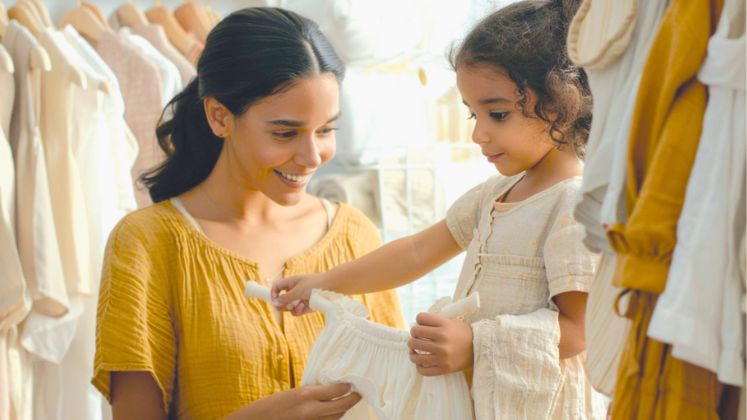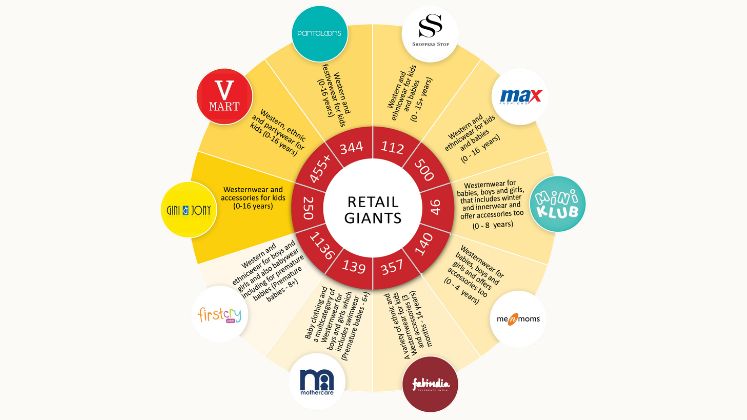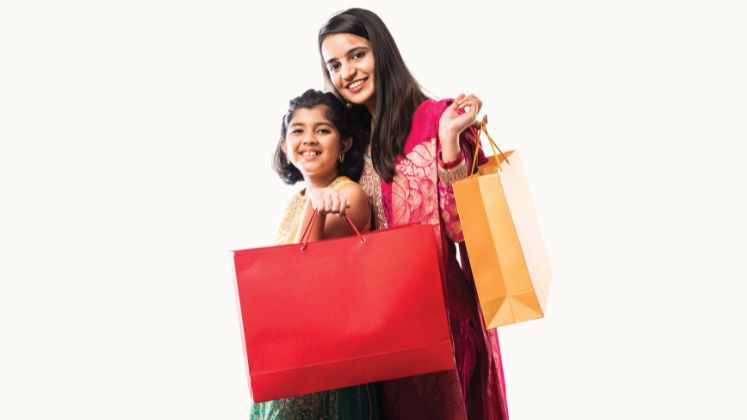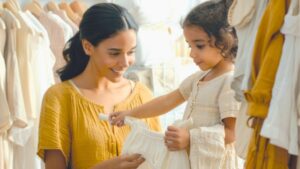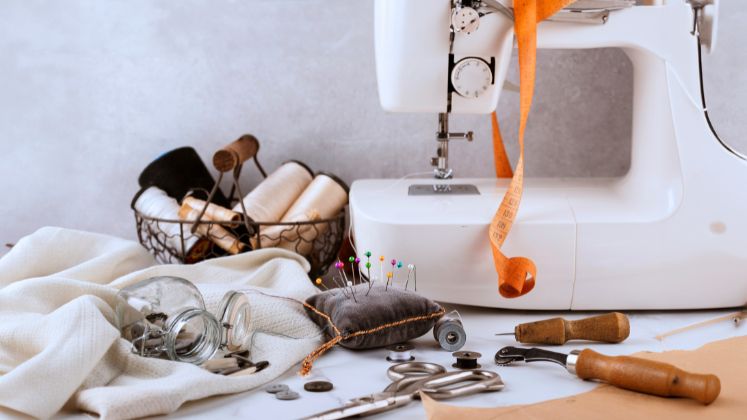Kidswear is no longer an afterthought—it’s a booming business. Indians are increasingly spending more than they ever have on kidswear.
This growth can be attributed to several factors including double-income households, brand awareness and affordability and the rise of e-commerce platforms. Moreover, today’s parents, especially mothers, are more fashion-conscious and eager to provide the best for their kids.
According to the Global Motherhood Survey by Frank About Women, Indian and Chinese mothers are amongst the ones who can willingly stretch their budgets to accommodate branded products for their children.
The Indian kidswear market size reached Rs. 90, 801 crore (US $ 10.60 billion) in 2024 with projections of reaching Rs. 1, 42, 198 crore (US $ 16.60 billion) by 2033, growing at a CAGR of 5.11 per cent, as per the report by IMARC Group.
ONLINE STARS AND RETAIL GIANTS
Today there are as many as 197 online kidswear brands in India, as per report by Tracxn and some of them are becoming key players in this burgeoning sector.
Hopscotch that houses western and ethnicwear, has reported an annual revenue of Rs. 220 crore (US $ 25.7 million), as of March 2024. Similarly, other D2C brands such as Alia Bhatt-backed Ed-a-Mamma, Masilo, Little West Story, Kidbea, BonKids, Mackly, Includ, Cot & Candy, Nigh Nigh, Funny Bones Clothing, Little Kangaroos, YK, 612 League amongst others are growing significantly.
Likewise, ethnic kidswear market is also expanding with brands like Little Muffet, poised to clock a revenue of Rs. 100 crore (US $ 11.67 million) in 2025.
Others brands such as Mouse In The House, Ankid, P & S Co., Little Bansi, Dulaar, Mockingbird, The Plum Bum, A Little Fable, Nee & Oink, Tiber Taber, Bownbee, A.T.U.N, Shruti Jalan and Krimakay are carving out their space in this vibrant market.
The offline segment, which cuts across different income brackets and Tier-1 to Tier-3 cities, is also ruling the roost. For example, FirstCry, which has about 1136 stores, earned a revenue of Rs. 6481 crore (US $ 756.61 billion) in FY 2024.
Legacy player Giny & Jony, established in 1980 with over 250 stores across the country, was recently acquired by Suditi Industries in Q3 of FY ’25. The brand is aiming to close FY ’25 with revenues between Rs. 200-220 crore (US $ 23.35 million – US $ 25.68 million) and targets Rs. 350 crore (US $ 40.86 million) in FY ’26.
In addition, kidswear retail chains like Mothercare, MiniKlub, Me n Moms remain key players of India’s offline retail landscape.
Also, leading retailers and brands such as Reliance Trends, Max Fashion, Shoppers Stop, Westside, Pantaloons, Fabindia, H&M, Zara, Benetton, V Mart, Lifestyle, U.S. Polo ASSN, Tommy Hilfiger feature their own dedicated kidswear lines.
These brands offer a wide range of apparel options for children, staying attuned not only to seasonal trends but also to social media narratives. A popular example is the ‘Mini-Me’ trend, where kids’ clothing mirrors adult fashion. In fact, millennial mothers view their kids as an extension of themselves and often shop from the same brands for their kids.
As the middle-class in India continues to grow, the kidswear market has more reasons to cheer. A report by Rediffusion Consumer Lab predicts that by 2047, 60 per cent of India’s population or around 1 billion people will fall into the middle-class bracket, defined as households earning Rs. 5 to Rs. 30 lakh per year.
| D2C KIDSWEAR BRANDS | ||
| Name of the Brand | Products Offered | Target Age Group |
| Keebee Organics | Organic western and ethnic kidswear, accessories and swaddle and quilts and dohars | 0-10 |
| Hopscotch | Western and ethnicwear, footwear and accessories | 0-15+ |
| Kidbea | Westernwear and accessories | 0-6 |
| Ed-a-Mamma | Westernwear, accessories, maternitywear, books and toys and home and bedding | 0-13+ |
| Greendigo | Western and ethnicwear, sleepwear, bathwear and feeding accessories | Pre-mature babies – 24 months |
| BonKids | Westernwear | 0-15 |
| Dulaar | Western and ethnicwear, bedding and bathing accessories | 0-8 |
| Nino Bambino | From bodysuits to traditionalwear, the brand has a variety of wear for kids | 0-12 |
| Little Muffet | Ethnic and westernwear for babies and kids, partywear jewellery and fashion accessories | 0-15 |
| Masilo | Western babywear, gears for kids, bathing accessories and toys | 0-2 |
| Little West Street | Mainly westernwear but also has limited ethnicwear, accessories focused on bedding and bathing | 0-13+ |
| PatPat | Focuses on outerwear, babywear, matching sets and swimsuits | 0-12 |
| Veronna | The label offers rompers, dresses, tops, blouses, pants, playsuits and jumpsuits, along with accessories | 6 months – 5 |
| Mackly | Includes babywear clothing, activewear, sleepwear and accessories | 0-16 |
| Includ | Includes a wide variety of clothing items for both boys and girls, including dresses, sets, T-shirts, shorts and accessories like hair bands, handbags and hats | 0-14 |
| P & S Co. | Focuses on luxury ethnicwear, footwear and accessories | 0-16 |
| Cot & Candy | Includes bodysuits, nightsuits, dresses, joggers, T-shirts, sleepsuits, zipsuits, sleeping gowns and more | 0-6 months |
| Nigh Nigh | Includes nightsuits, jablas, rompers, swaddles, resortwear and a variety of casual westernwear | 0-13+ |
| Little Bansi | Includes ethnic kidswear right from kurta sets to sarees | 3 months – 16 |
| Mockingbird | Boasts ethnicwear for boys and girls | 0-8 |
AND THAT’S NOT ALL! THE LUXURY SEGMENT IS ALSO GROWING
India has emerged as a major global wealth hub, with 85,698 High Net-Worth Individuals (HNWIs) with assets exceeding US $ 10 million. This ranks India fourth worldwide, trailing only the US, China and Japan, according to the Global Wealth Report by property consulting firm Knight Frank. The number of HNWIs is expected to grow by 9.4 per cent, reaching around 93,753 by 2028, showing how the country’s wealth is increasing.
No wonder, India is now home to a growing portfolio of luxury kidswear brands, including Fendi, Givenchy, Moschino, Choupette, Balmain, Marc Jacobs, Lanvin, Stella McCartney, Mini Rodini, Boss and Elie Saab. Retail chains such as Les Petits and Little Tags Luxury—with stores in prime cities—are making these high-end offerings more accessible to affluent Indian consumers.
These premium products are priced between Rs. 2,400 to Rs. 2,44,500 (US $ 24 to US $ 2,856). Moreover, iconic names like Dior, Chanel and Dolce & Gabbana have already established a firm presence in India’s luxury kidswear space.
As a result, the luxury market continues to attract global players.
For instance, French brand Jacadi Paris, entered the Indian market with its first store in Mumbai’s Phoenix Palladium Mall in February, which was followed by a store in Bengaluru’s Mall of Asia in April. The brand also revealed that Indian parents’ share in premium childrenswear has gone up by 35 per cent in the last five years.
AGE IS (NOT) JUST A NUMBER
According to a World Bank report, 29 per cent of India’s 1.2 billion population is under the age of 14.
The opportunity extends even to Premies (premature babies). A study by NIBMG (National Institute Of Biomedical Genomics) reported that 3.6 million pre-term babies are born annually. Consequently, brands like Greendigo are stepping up to provide eco-friendly clothes for this category.
India’s child population spans diverse age groups with varying needs. For example, as per the Office of the Registrar General and Census Commissioner, the population of kids in the age group of 0 to 4 years’ old stood at 112.8 million in 2011. Additionally, with 25 million child births each year in India, as per UNICEF, the baby and toddlers’ market in India is lucrative with brands like Masilo, Veronna and Cot & Candy stepping up to cater to this section with sustainable babywear essentials. These little ones also exert a huge influence on purchasing decisions. According to the study in ‘ShodhKosh: A Journal of Visual and Performing Arts’ that was done on mothers of 2-6 years old in Prayagraj, it was revealed that 56.7 per cent of mothers took opinion from children while choosing their outfits.
Moving up in age, the population of 5-9 years was approximately 126 million. This segment is heavily catered to by brands like Ed-a-Mamma and Funny Bones Clothing. According to Bonafide Research, character-themed apparel—featuring popular figures from Disney, Marvel, Warner Bros., and DC—is especially popular in this age group. Brands like BonKids have capitalised on this trend through licensing partnerships.
In the 10-14 years’ age bracket, which had a population of 132 million according to CEIC Data, fashion influence starts to peak. Bonafide Research notes a strong preference among boys for denim, while girls in this age group increasingly gravitate toward formal and partywear, driven by rising exposure to social events and peer trends.
Influenced by social media, climate activism and the desire to ‘fit in’, these teens increasingly seek clothing that mirrors adult fashion. As cartoon-themed outfits fall out of favour, brands like Zara are stepping in with collections that replicate adultwear, catering to the maturing tastes of this demographic.
| US $ 16.60 BILLION The Indian kidswear market size reached Rs. 90, 801 crore (US $ 10.60 billion) in 2024 with projections of reaching Rs. 1, 42, 198 crore (US $ 16.60 billion) by 2033, growing at a CAGR of 5.11 per cent, as per the report by IMARC Group. |
SUSTAINABILITY IS THE NEW NORM
In kidswear, every brand swears by sustainability by choosing soft, breathable fabrics that are gentle on a child’s skin and help reduce the chances of allergies or skin problems. For instance, labels like Kidbea, Cocoon Care, Sweet Bamboo, The Plush Club, Tiny Lane, etc.., use bamboo fibre in their clothes. Apart from bamboo, labels including Mini Rodini and Cuddle Sprouts are using TENCEL™ Lyocell fibres too. Piñatex, made from the waste leaves of pineapple and considered a substitute for leather, is slowly gaining popularity with luxury kidswear D2C brand Infantium Victoria using it in its items like jacket and coats.
Another new material is SeaCell, made from seaweed and wood. It’s light, breathable and used by brands like Bee Like Kids and Vild House of Little.
While Merino Wool remains a popular choice, brands like Noos Concept and Norlha are also exploring Yak Wool to make warm outfits for kids. To keep the little ones safe from scorching sun, numerous brands are making products with a UPF50+ rating. This is common in swimwear. Players like M&S, Caden Lane, Decathlon and Speedo offer these sun-safe clothes for children. Brands are even ensuring that minor elements like buttons fall under eco-friendly ambit. Labels like Little Llama, Dulaar, Ed-a-Mamma and others are using natural materials like coconut, wood and sea shells for buttons.

